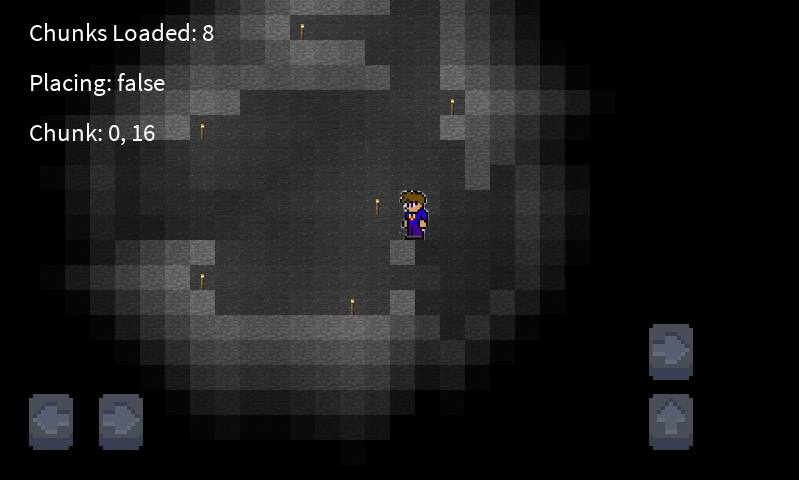Yes, here is yet another Terraria-clone (currently unnamed until I come up with a specific direction) that I am developing using LibGDX. Unlike most other clones, my main focus for the game is to optimize it as much as possible to allow it to be played smoothly on mobile (Android) devices. Because of this my sole focus is to design complex algorithms to keep the amount of resources and memory being used as low as possible. For example, the two big things that I am currently focusing on optimizing are the world management system and the lighting system. Right now I have the world management system pretty much done. I am able to have a world with 1,620,000 tiles managed efficiently and ran on an Android device at a stable 30 fps. I also developed my own physics system which efficiently handles collisions for all entities in the world. The basis of the lighting system is done but I need to work on the removal of light when it is surrounded by other lights.
Current Features
- World Management System
- Procedural World Generation
- Physics System
- Lighting System
- Saving and Loading Worlds
- Block Breaking System
- Item and Inventory System
- Crafting System
Current Focus
- Working on the procedural generation of the world.
Stream
I live stream development of the game whenever I am working on it. You can watch my streams here. Be sure to sign up and follow me to get notified when I am streaming. I stream everyday for a few hours a day!
Video Feature Showcase - December 19th, 2015
Update #3 - December 17th, 2015
I managed to implement procedural generation of caves, ores, and trees. The cave generation values need to be played with a tad, but as of right now it works great. You can see a picture of the updates below. Let me know what you guys think!
Update #2 - October 5th, 2015
So I added the inventory and item system to the game! I also added drops when breaking blocks. Here is an image of what it looks like currently. The next thing to do is to add the ability to place blocks based on what is selected in the inventory. Let me know what you guys think!
Update #1 - September 30th, 2015
Here are some images of the game. The first image is a picture of the lighting system as of a day ago. The second image is a picture of the lighting system as of two days ago.
As I further the lighting system I will be posting more pictures and videos. Let me know any suggestions and comments you have!














